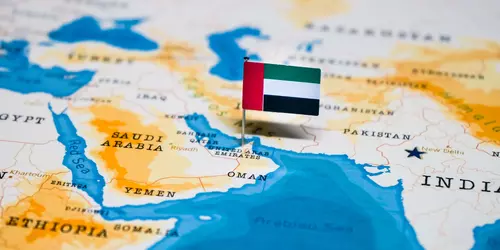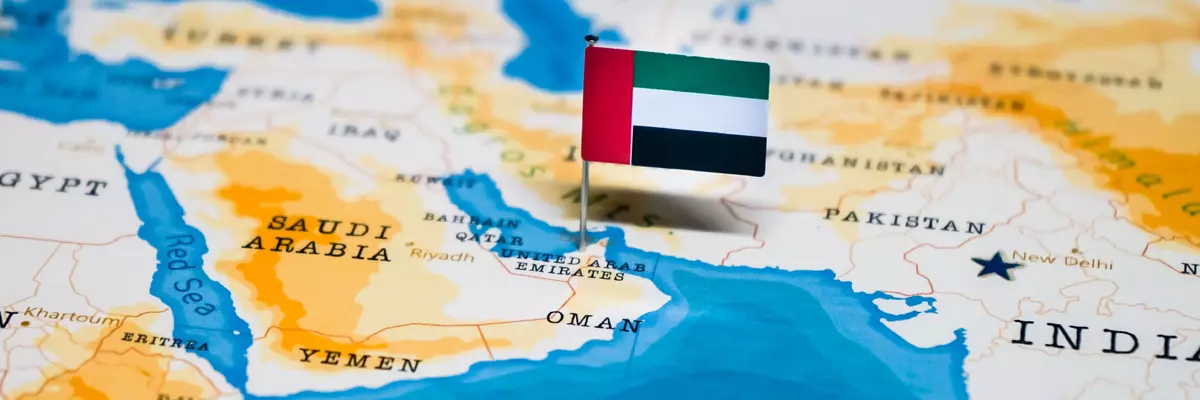The climate year of United Arab Emirates
The United Arab Emirates are covered on an area of more than two thirds with foothills of the Great Arabian Desert. Because of this, the inland area has a dry desert climate. In the middle of the desert, it can get very cold at night. On the headland between the Persian Gulf and the Gulf of Oman in the northeast, foothills of the Hajar Mountains rise to heights of over 1000 meters. Due to the high altitude, it is noticeably cooler and more humid there. Between the sandy desert and the north coast there is a salt marsh plain about 15 km wide. The coast of the Gulf of Oman is fertile and densely populated. All important cities are located on the north coast, e.g. Dubai. There are numerous peninsulas and islands off the coast.
General information about United Arab Emirates
The tourist history of the United Arab Emirates is still quite young, but took a rapid development in recent decades. Especially Dubai and Abu Dhabi developed to popular destinations for many Europeans. The vacationer can expect long beaches, warm water and sunshine almost all year round. In Dubai you can marvel at the world-famous hotel Burj Al-Arab or the skyscraper Burj Khalifa, the highest building in the world with a height of 828 meters. There are also many opportunities for extended shopping tours. The best: Most goods are cheaper than in this country due to tax exemption. Beyond the skyscrapers, you can experience the romance of the Orient on desert safaris in a jeep or on a camel, as in the stories of the Arabian Nights.
Tourism United Arab Emirates
The United Arab Emirates consist mostly of desert. Accordingly, there is little rainfall throughout the year. The little precipitation falls in the winter. In the summer months, there is often no precipitation for months. The months with the most precipitation are February and March. Often the rain evaporates before it reaches the ground. In winter and early summer, the shamal, a northwesterly wind that brings quantities of sand, blows. From May to October it is extremely humid in the coastal regions with up to 90% humidity. In midsummer, temperatures reach well over 40 degrees during the day. Even at night, with the exception of the desert regions, the thermometer rarely falls below 25 degrees. The average daytime temperatures are 28-34 degrees. In the late summer months, the Sharqi, a southeasterly wind, creates an uncomfortable climate in the coastal regions. Between November and April, the daily maximum temperatures range between 22 and 30 degrees. With the exception of the time when the Shamal blows, there is sunshine and blue skies almost all year round.




